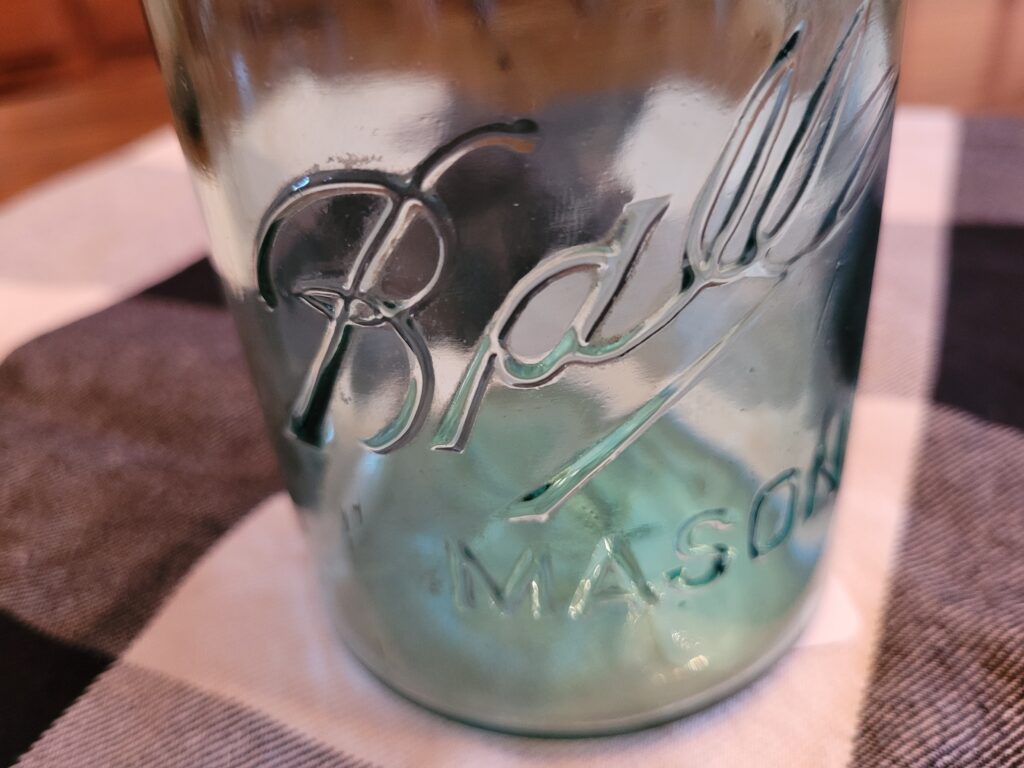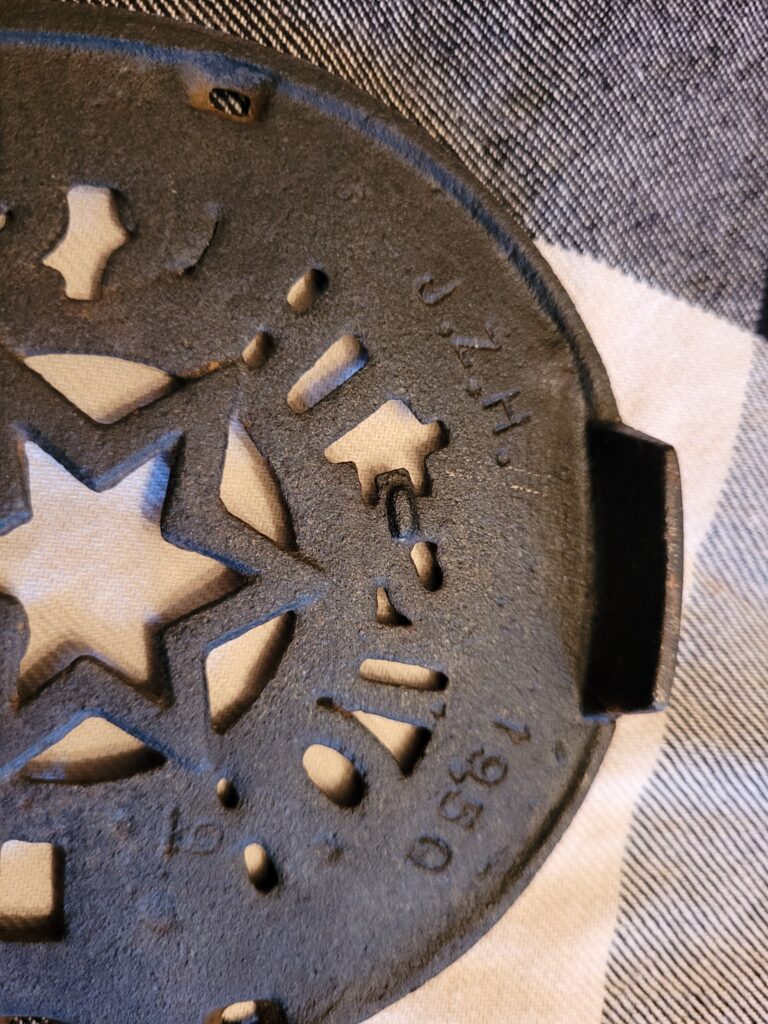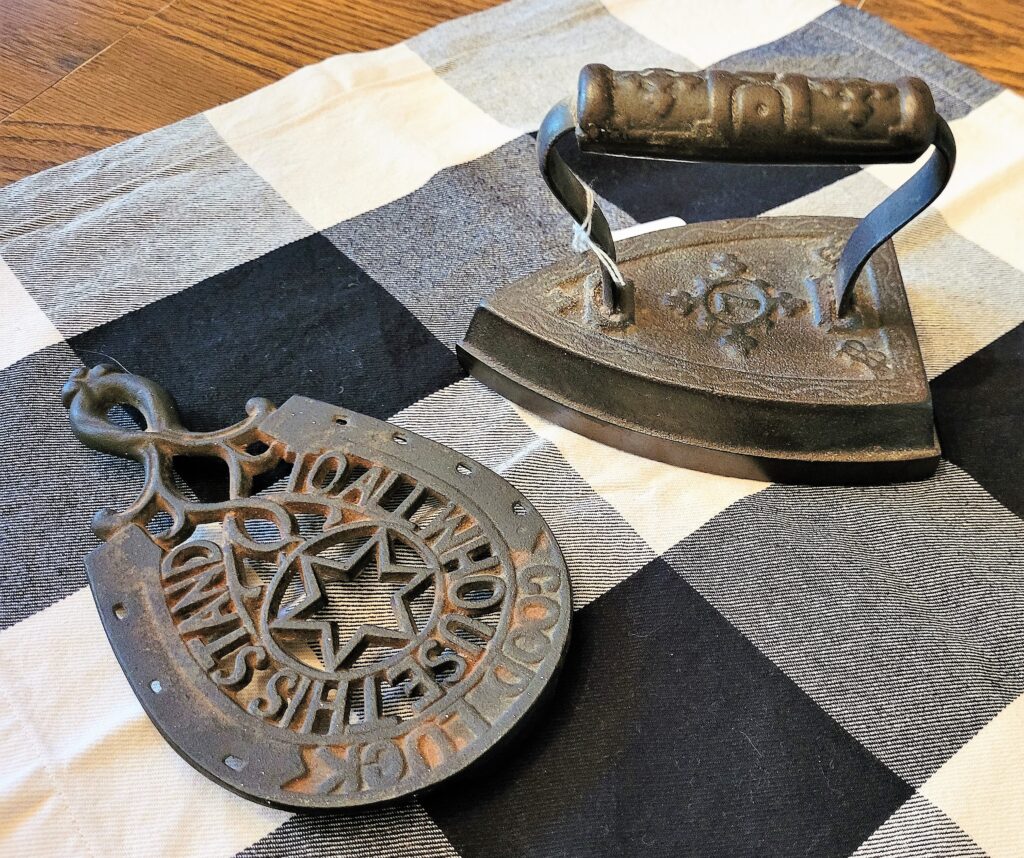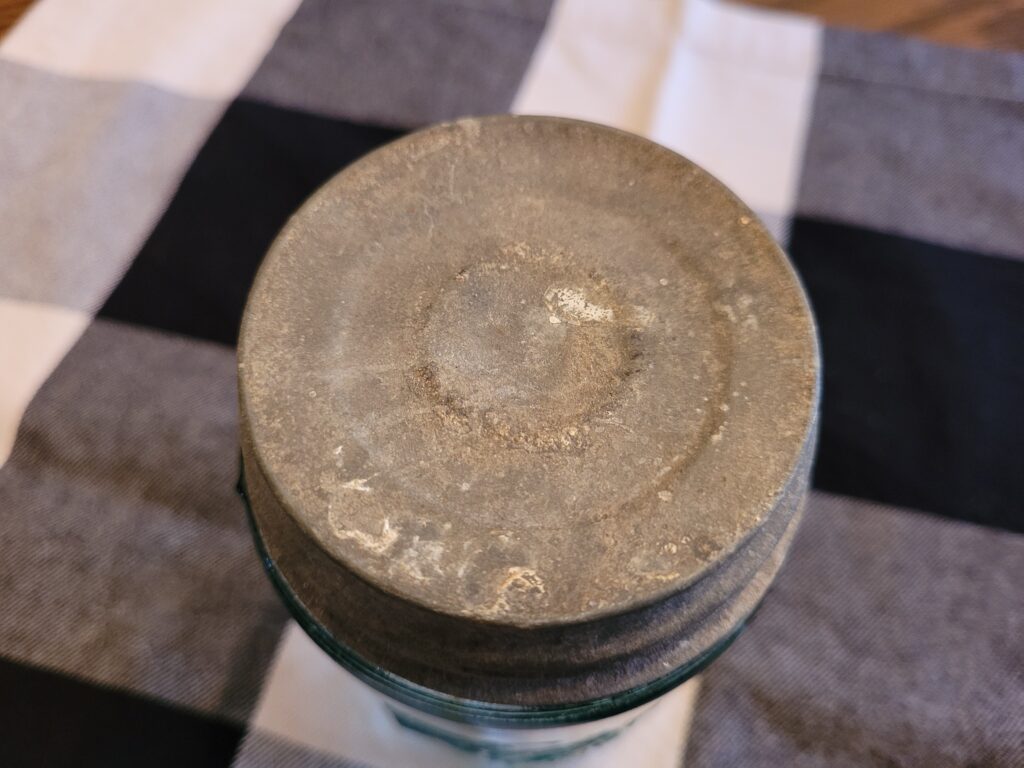I started to call this blog, “Ball and J .Z. H” but at the last minute changed the name to Trivet and Canning Jar. This is because not everyone is familiar with the Ball canning jar brand or the name of J. Z. H. on trivets.
So, recently I purchased a no. 7 sad iron/trivet set and a Ball Mason canning jar in the Aqua Blue color. The trivet and canning jar were found at one of my favorite resell charity shops.

J. Z. H. 1950 Trivet
The J. Z. H. 1950 trivet information is very interesting.
I actually emailed Lynn from Trivetology.com to get a little more information about this trivet set and her online site. So far, I spent a couple of hours online reading various materials on trivets and looking at photographs.

This is a close of view of the markings on the back of my trivet or “J. Z. H. 1950”
This antique cast iron trivet is horseshoe shape and says, “Good Luck to All Who Use this Stand”. The trivet has an open work six-pointed star in the center. It is footed with three peg legs, thus, the name trivet. The trivet came with a no. 7 sad mini iron. On the back of the cast iron trivet, there are the initials and a date, “J .Z. H. 1950”. The front of the trivet also has some areas of rust on it.

Brief History of John Zimmerman Harner Trivets
John Zimmerman Harner made a number of black cast iron trivets from the time frame of 1940-1960’s. The trivets were produced by Union Manufacturing in Boyerstown, PA. Mr. Harner was both an owner and manager of the Union Manufacturing Company.
Founded in 1894, the company made sad irons, cast iron stoves, and other items. After WWII, their line also included trivets. From 1944 to 1958, the company produced trivets in 65 different patterns.
Harner loved trivets and had a large trivet collection. Initially he started the J. Z. H. Alphabet series trivets. He used the Union Manufacturing Company and the foundry to make his cast iron trivets. Eventually, he amassed a collection of over 60 different styles. He started with the letter “A” and for each different design he would go to the next letter. He, also, added the date it was reproduced.
Eventually, he had so many patterns, he ran out of alphabet letters, so then he started using numbers. His trivets vary in weight but are generally between one and two pounds.
During the 1950’s through the 1960’s, trivet patterns were often sold, shared, or illegally copied. Copies were slightly smaller in size than the originals. The was due to shrinkage of the molten metal after the cooling.
Harner, also, worked with the Wilton Black Line to produce trivets. My trivet pattern is similar to the Wilton Black Line, no. 19 trivet. I didn’t think this is a Wilton because the size is different. They produced a 9-inch trivet and my trivet is approximately 71/2 inches in length.
Lynn Rosack of Trivetology.com
To solve this trivet mystery, I contacted Lynn Rosack of Trivetology.com.
Lynn wrote back, that the original version of “Good Luck to All who Use this Stand” design dates back to the late 1800’s and was marked PAT APPL’D FOR on the reverse. There have been many reproductions made of this popular design over the years. Happy news is that Lynn feels my trivet is an original cast by J. Z. H.
Sad Iron
Lynn also gave me additional information on the sad Iron part of the set. Looks like different foundries numbered their irons according to the weight but that was not always the case. Unfortunately, this sad iron does not look like it has any marking to identity where it was made.

Ball Mason Canning Jar
Next I want to talk about my antique Ball Mason canning jar. The canning jar is a bit easier to find information on.
The aqua blue canning jar was produced from 1900 to 1910. It, also, has a large air bubble over the “ll” in the front of the jar. There are Ball Canning Jar identification charts online showing the Ball logo and the various dates.
If you look closely at this Ball logo on the front of the jar, you will notice the line under the Ball name which comes up to a little oval. So, that means it is from the 1900 to 1910 era. It also comes a zinc lid. Some collectors call this the three LLL jar since the last hoop looks like an L.
The vintage Ball canning jar came with a zinc lid.

Ending Notes on Trivet and Canning Jar
I enjoyed learning a little bit more about trivets, sad irons, and Ball Mason Canning jars.
A Big Thank You to Lynn Rosack of Trivetology.com for her information on the J. Z. H. Trivet and the Sad Iron for today’s blog.
(Readers, Lynn asked me about a subscriber button for my blog. After years of blogging, I guess I should add one? And, also perhaps open my email? Are there any techies out there that can help me out?)
Resource Sites: Trivetology.com

